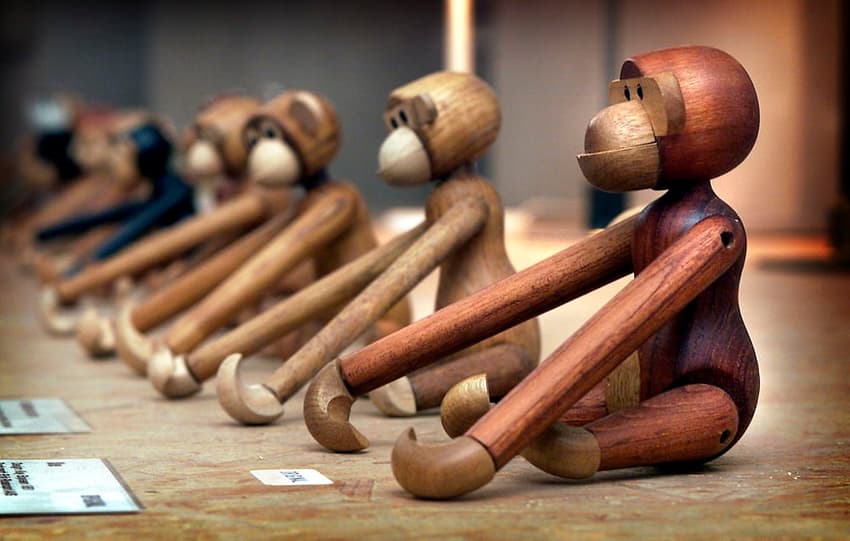Model monkey and Rolex work stolen from Danish museum

Two characteristic pieces of art have been stolen from the Trapholt museum at Kolding in southern Jutland.
On December 10th, several individuals broke into the museum, carrying away a 30-kilogram model of a monkey Kay Bojesen, a Danish designer of the early 20th century known for creating wooden animals.
A second break-in, just after midnight on New Year’s Day, resulted in the loss of ‘Rolexgate’, a piece by Denmark-based Chilean artist Marco Evaristti. Two people are thought to have been involved in the second break-in.
The Rolexgate piece depicts the entrance to the Second World War concentration camp Auschwitz. It is made partly from gold and diamonds and has a Rolex watch at its head.
“This is every museum director’s nightmare. Trapholt is naturally secured according to all the rules and recommendations and has the same security level as other museums in Denmark. But it is difficult to prevent all possible scenarios,” Trapholt director Karen Grøn said in a statement published on the museum’s website.
“When persons carry out a harsh and unconscionable break-in like this, it’s not just Trapholt but all of us who lose important art,” Grøn added, noting that the museum’s collection is the property of the Danish public.
“For the purposes of our inquiries, police are looking for witnesses or others who can contribute to the investigation of the break-in,” South East Jutland police said in a press statement.
“We cannot rule out the possibility of the same culprits being involved in both break-ins,” the statement continued.
Thieves may have cycled to the museum before breaking in during the early minutes of January 1st, according to police, who called for people who may have seen persons cycling close to Trapholt to contact them.
READ ALSO: Stolen 'world’s most expensive' vodka bottle found empty at Danish building site
Comments
See Also
On December 10th, several individuals broke into the museum, carrying away a 30-kilogram model of a monkey Kay Bojesen, a Danish designer of the early 20th century known for creating wooden animals.
A second break-in, just after midnight on New Year’s Day, resulted in the loss of ‘Rolexgate’, a piece by Denmark-based Chilean artist Marco Evaristti. Two people are thought to have been involved in the second break-in.
The Rolexgate piece depicts the entrance to the Second World War concentration camp Auschwitz. It is made partly from gold and diamonds and has a Rolex watch at its head.
“This is every museum director’s nightmare. Trapholt is naturally secured according to all the rules and recommendations and has the same security level as other museums in Denmark. But it is difficult to prevent all possible scenarios,” Trapholt director Karen Grøn said in a statement published on the museum’s website.
“When persons carry out a harsh and unconscionable break-in like this, it’s not just Trapholt but all of us who lose important art,” Grøn added, noting that the museum’s collection is the property of the Danish public.
“For the purposes of our inquiries, police are looking for witnesses or others who can contribute to the investigation of the break-in,” South East Jutland police said in a press statement.
“We cannot rule out the possibility of the same culprits being involved in both break-ins,” the statement continued.
Thieves may have cycled to the museum before breaking in during the early minutes of January 1st, according to police, who called for people who may have seen persons cycling close to Trapholt to contact them.
READ ALSO: Stolen 'world’s most expensive' vodka bottle found empty at Danish building site
Join the conversation in our comments section below. Share your own views and experience and if you have a question or suggestion for our journalists then email us at [email protected].
Please keep comments civil, constructive and on topic – and make sure to read our terms of use before getting involved.
Please log in here to leave a comment.